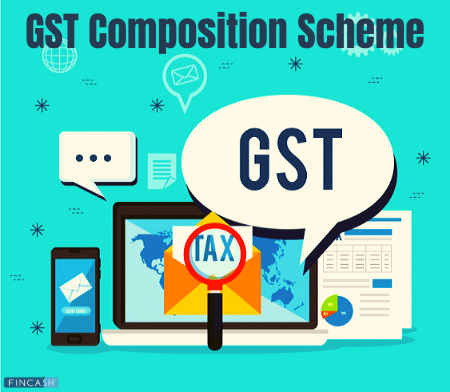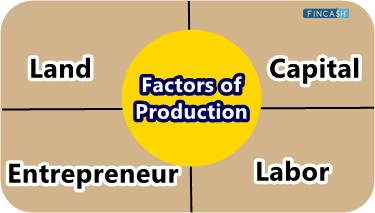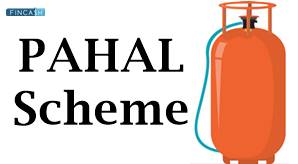Production Linked Incentive Schemes
The Production Linked Incentive, or PLI, scheme aims to provide enterprises with incentives based on increased sales of products created in domestic units. It was first established in April 2020 for the Large-Scale Electronics Manufacturing sector but was later expanded to include ten different industries by the end of the year.

This programme was created in support of India's Atmanirbhar Bharat movement. This article explains PLI's meaning, characteristics, relevance, and the major industries where the Production Linked Incentive system has been implemented, its goals, and the way forward.
What is a Production Linked Incentive (PLI) Scheme?
The Production Linked Incentive (PLI) Scheme is an initiative by the government of India that aims to stimulate domestic and local production to create micro-jobs while also encouraging international enterprises to locate labour in the country.
The plan intends to make India self-sufficient in terms of -
- Manufacturing goods
- Establishing it as a global manufacturing powerhouse
- It also attempts to make domestic manufacturing more competitive and efficient
- To increase capacity and take advantage of Economies of Scale, boost exports, attract investment, and generate employment
The success of Special Economic Zones (SEZs) only strengthens the case for the economic impact that this strategy can have. The system is modelled after 'Made in China 2025,' which aims to improve the competitiveness of specific sectors.
Features of Production Linked Incentive Scheme
PLIs are fundamentally financial incentives for businesses to increase their output. They could be in the form of tax relief, tariff reductions on imports and exports, or even simpler Land acquisition arrangements. Here are features of the PLI Scheme:
- The scheme's duration is from 2023-24 to 2027-28
- The scheme will provide qualifying enterprises with a 4-6% incentive on increased sales of products made in India and covered by target segments for five years, with the financial year 2019-20 serving as the Base Year for incentive calculations
- It is estimated to attract over 40,000 crores in investment
- About 5,25,000 people will be employed, with 68,000 direct employees
- A Nodal Agency, serving as a Project Management Agency (PMA), will help implement the scheme. It will provide secretarial, administrative, and implementation assistance and additional functions as allocated by MeitY from time to time
- India will climb up the steel Value Chain and catch up to sophisticated steelmaking countries, like Korea and Japan if it becomes Atma Nirbhar in manufacturing speciality steel
Talk to our investment specialist
Production Linked Incentive Scheme Eligibility
The PLI Scheme is open to companies registered in India and are engaged in manufacturing products that fall within the scheme's target segments. The eligibility of PLI is determined by increasing the investment thresholds over the base year. Thus, the eligibility criterion is as follow:
- Companies manufacturing mobile phones worth Rs. 15,000 or more are eligible for a 6% incentive on all new phone sales exclusively made in India
- The incentive has been maintained at Rs. 200 crore for the next four years for firms owned by Indian nationals that manufacture such mobile phones
Why is PLI Required?
Considering that it has become difficult for the domestic government to invest in Capital-intensive industries through PLI. It intends to welcome foreign corporations with sufficient cash to invest in India's infrastructure.
The type of manufacturing expansion that India wants necessitates various efforts across the board. Electronics and medicines are significant industries; therefore, it would be highly beneficial if the government could concentrate on labour-intensive industries, like clothing and leather.
Benefits of PLI Scheme
PLI scheme has broader prospects to benefit both manufacturers as well as consumers. Here are the benefits listed below to understand better why the PLI scheme is beneficial.
- These manufacturing sectors are labour-intensive; they will provide a trained workforce for the masses and reduce unemployment
- It will provide a much-needed boost to our country's domestic industrial units
- PLI will supply low-cost indigenous Raw Materials for Smart City and Digital India Mission projects
- It will increase current productivity while also increasing the likelihood of success
Working of Production Linked Scheme
The PLI framework enables India to take concrete initiatives to enhance the Economy's manufacturing potential in the short future. The policy's cornerstones are as follows:
As large-scale manufacturing necessitates a significant workforce, the PLI programmes are planned to use India's vast people capital and enable upskilling and technical education. Thus, leading to employment generation
Investors are likely to be pushed to build large-scale manufacturing facilities since the incentives are proportional to production capacity and total turnover. It is also projected to strengthen industrial infrastructure, which will help the supply chain ecosystem as a whole
PLI schemes aim to bridge the gap between India's severely lopsided Import-export basket, dominated by raw material and finished goods imports. The PLI programmes are designed to enable indigenous manufacturing of goods, reducing dependency on imports in the near term and increasing the volume of exports from India in the long run
Production Linked Incentive Scheme Sectors
Initially, the main focus areas were mobile manufacturing and electric components, pharmaceutical manufacturing, and medical device manufacturing. Since then, the PLI scheme has grown to include programmes for various industries to strengthen India's manufacturing capacity and promote export-oriented production.
Here are the 10 beneficiary sectors of the scheme, which were added later.
| Sectors | Implementing Ministry | Budget (INR Crores) |
|---|---|---|
| Advance Chemistry Cell (ACC) Battery | NITI Aayog and Department of Heavy Industries | 18100 |
| Speciality Steel | Ministry of Steel | 6322 |
| Telecom & Networking Products | Department of Telecom | 12195 |
| Food Products | Ministry of Food Processing Industries | 10900 |
| Automobiles & Auto Components | Department of Heavy Industries | 57042 |
| Electronic/Technology Products | Ministry of Electronics and Information Technology | 5000 |
| High-Efficiency Solar PV Modules | Ministry of New and Renewable Energy | 4500 |
| Textile Products: MMF segment and technical textiles | Ministry of Textiles | 10683 |
| White Goods (ACs & LED) | Department for Promotion of Industry and Internal Trade | 6238 |
| Pharmaceuticals drugs | Department of Pharmaceuticals | 15000 |
Critical Targets of Production Linked Incentive Scheme
The main target areas of the Production Linked Incentive Scheme are as follow:
- The Indian textile industry is one of the world's largest sectors, and this scheme will attract significant investment, particularly in the Man-Made fibre (MMF) segment and technical textiles
- By 2025, India plans to develop a USD 1 trillion digital economy, thanks to initiatives such as Smart City and Digital India, which are projected to boost demand for electronics
- India is the world's second-largest steel producer, and introducing it under the PLI scheme will benefit the country by potentially expanding export opportunities
- India's government aims to become a more important member of the global supply chain and boost exports
- The PLI plan will improve the competitiveness of the Indian automobile industry and increase its Globalization
- Telecommunications, solar panels, medicines, white goods, and the other areas described can help India expand economically and become a worldwide manufacturing centre
Production Linked Incentive Scheme for Textiles
For textiles, the PLI schemes have a total budget of Rs. 1.97 lakh crores for 13 industries, as announced in the Union Budget 2021-22.
In addition to Rebate of State and Central Levies and Taxes (RoSCTL), Remission of Duties and Taxes on Exported Products (RoDTEP), and other government initiatives in the industry, such as supplying low-cost raw materials, skill development, and so on, will usher in a new era in textile production.
The scheme's main aim is to enhance the manufacturing of high-value Man-Made Fiber (MMF) fabrics, clothing, and technical textiles. Over five years, incentives of Rs. 10,683 crore will be given to the industry on production.
Two Phases of Incentives for Eligible Producers:
Eligible producers will get incentives in 2 phases which are as follow:
First Phase - Individual or any firm prepared to invest at least Rs. 300 crore in the plant, machinery, equipment, and civil works (excluding land and administrative building costs) to create MMF fabrics, garments, and technical textile items is eligible to participate.
Second Phase - Applicants must be prepared to invest a minimum of Rs. 100 crore under the same criteria (as in the first phase) to be eligible to participate.
Expected Benefits of the PLI Scheme
In this section, you'll learn about the benefits which can be expected from the PLI Scheme. These are as follows:
- It will result in new investment of over Rs. 19,000 crores, cumulative revenue of over Rs. 3 lakh crore, and more than 7.5 lakh new job opportunities in this area, with several lakhs more in supporting activities
- As women dominate the textiles sector, the initiative will empower women and enhance their involvement in the formal economy
Implementation and Barriers of PLI Scheme
The PLI scheme provides qualifying manufacturing enterprises incentives, ranging from 4% - 6%, on incremental sales above the base year of 2019-20 for a term of 4-6 years. It's similar to a subsidy given to selected recipients in the form of a direct payment earmarked for domestically made items.
The amount of the incentive varies per sector, and the savings created by PLI in one area can be allocated to other industries to optimize profits. The PLI programmes are designed to encourage major local and international companies to participate in the manufacturing, resulting in more inclusive growth.
However, some of the barriers of this scheme are:
- India has a higher cost of production. According to Ernst & Young research, if a mobile costs Rs.100 to produce, the effective cost of manufacturing the mobile is 79.55 in China, 89.05 in Vietnam, and 92.51 in India
- Domestic firms do not have a good Market share. This approach may benefit overseas corporations more than domestic ones in such instances
- These plans might be challenged at the World Trade Organisation (WTO) for violating the principle of national treatment
The Bottom Line
According to the PLI scheme, both the service and manufacturing sectors must be prioritized, and neither must be considered a trade-off. The focus should also be on company co-location to balance regional Economic Growth.
The federal government's working and the states persuade them not to engage in trade-restrictive policies, such as employment reservation for residents, is required. PLI schemes are used to implement structural changes, like land reforms and single-window clearance, among other things. The PLI plan must be combined with other structural changes for India to become a global manufacturing powerhouse.
All efforts have been made to ensure the information provided here is accurate. However, no guarantees are made regarding correctness of data. Please verify with scheme information document before making any investment.












